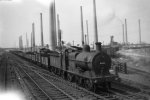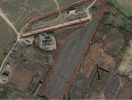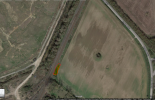Arglwydd Golau
Established Member
- Joined
- 14 Apr 2011
- Messages
- 1,421
Many thanks, RT4038 for your comprehensive comments in #12. Having loads of relations in Bedfordshire villages I recall the brickworks dominating the skyline in the 1960's very well, it was quite a shock years later to find that they had all disappeared as I drove towards Bedford from the M1. A few years ago I made the journey by train from Bletchley, attempting to locate Forders Sidings Signal Box where Dad worked sometime in the 1940's but didn't have any luck. Hoping to try again in a few weeks rather better prepared, but I notice the train service is currently very sparse.
If I may, I'm going to illustrate the line with one of Dad's random photos, taken from, I think, the signal box...he also took one of the box, may have been on his last day. The long train appears to be of empties, although it isn't easy to tell...quite a load for an elderly 3F! There is also another 3F (I think) in the background and plenty of wagons. The driver (or fireman) appears to realise that Dad was taking a photo. One of those old railway photographs (of which there are many!) in an industrial setting that has changed beyond all recognition.
If I may, I'm going to illustrate the line with one of Dad's random photos, taken from, I think, the signal box...he also took one of the box, may have been on his last day. The long train appears to be of empties, although it isn't easy to tell...quite a load for an elderly 3F! There is also another 3F (I think) in the background and plenty of wagons. The driver (or fireman) appears to realise that Dad was taking a photo. One of those old railway photographs (of which there are many!) in an industrial setting that has changed beyond all recognition.




